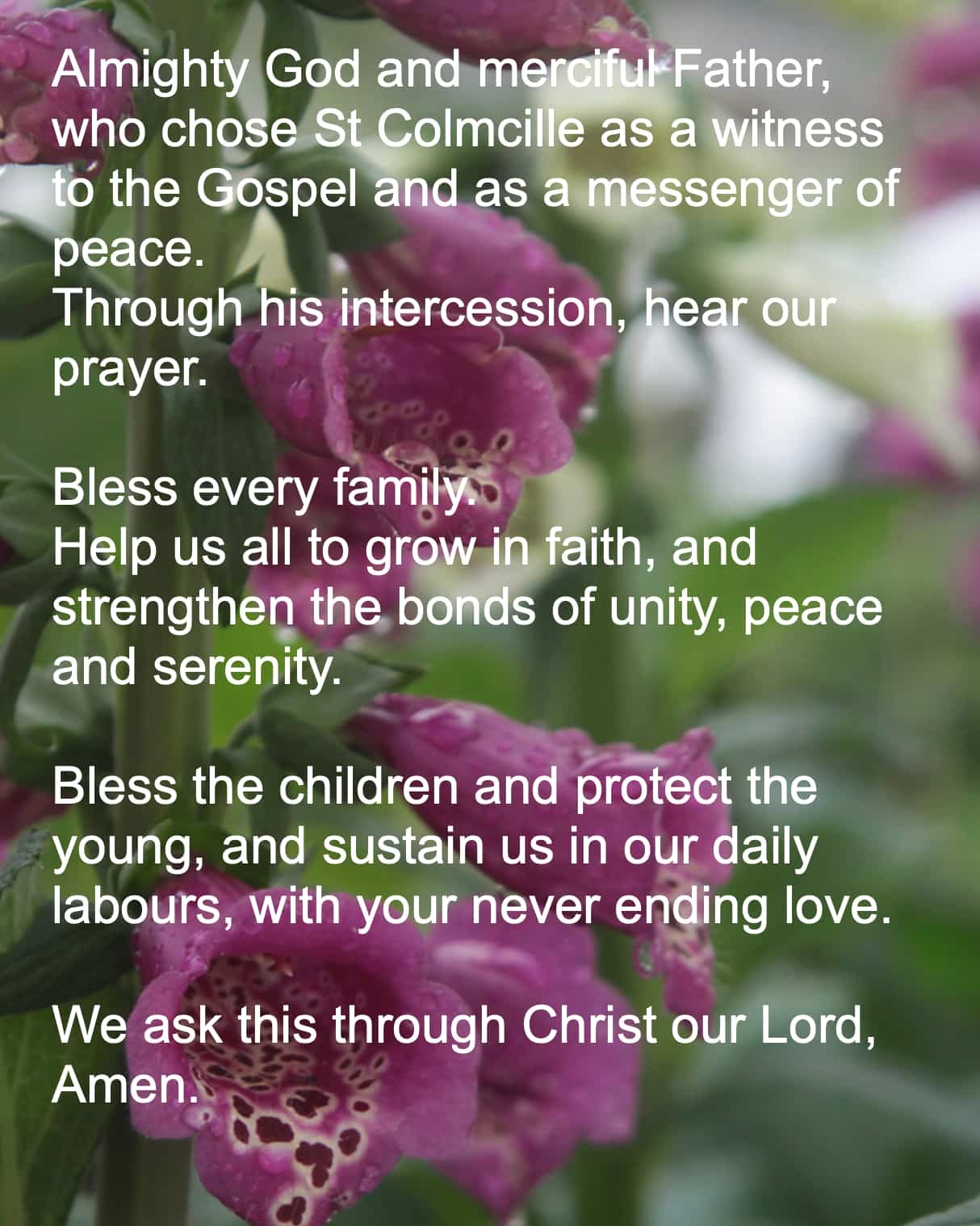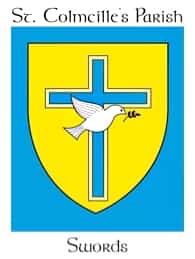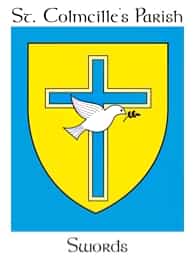Loading...
We would like to share with you a little information about our saint, who is also known as St. Columba. We know he built a monastery in Swords, which still contains a round tower. But what about the man Colmcille?
Colmcille was born in Gartan, Co. Donegal in 521 A.D. He loved playing in the countryside. He enjoyed fishing and hunting with his friends. When he was about 16, he left home to become a priest. He went to the monastery of Clonard in Co. Meath and later to Glasnevin. While studying to become a priest, he prayed a lot and was given the name ‘Dove of the Church’ – Colm is a ‘dove’ and Cill is ‘church’ in Irish. He also made lots of friends. The monasteries in which he lived were common around Ireland at that time. They contained many buildings, some made of wood and others of stone. There was a church where the monks prayed, a refectory where they ate, a scriptorium where they wrote beautiful manuscripts, cells for the monks to sleep in and a guest house for visitors. They worked at a great variety of tasks. Some made crosses and chalices from gold, some wrote manuscripts, some worked on the farm, some cooked, some made stone crosses as gravestones when monks died.
Colmcille, with the other monks, would pray three times each day and three times each night. As well as working and praying, he often copied manuscripts of holy books. These books were made from vellum, the skin of a calf or a goat which had been stretched and dried in the sun. It took a long time to copy the holy books, as they were beautifully illustrated with inks made from various plants growing around the monastery. One of Colmcille’s friends was called St. Finnian, who owned a beautiful book of the psalms. Colmcille secretly copied this book. When Finnian found out he asked Colmcille to return the book and the copy. Colmcille refused so he was taken to the High King of Ireland, who said, “To every cow her calf, and to every book its copy!” Finnian won the case and Colmcille returned the book and the copy.
The first monastery Colmcille was sent to was in Derry. It was situated in an oak forest. the Irish word for oak is ‘dair’, so the monastery became known as Doire Colmcille, which means Colmcille’s oak forest. Other monasteries built by Colmcille and his monks were at Durrow, Kells and our own town of Swords.
In 560 A.D. the High King held the Festival of Tara, during which non-Christian rites were performed. Colmcille was angry so he got an army together to attack the High King. A big battle took place in Co. Sligo and 3,000 people were killed. Colmcille was so ashamed of this huge number of deaths that he decided as a penance to leave Ireland and go to Iona, an island off the coast of Scotland. He built a monastery there and many monks lived there with him. From there, some of them went to England and Europe, building monasteries and schools and converting people to Christianity.
Colmcille died on 9th June 597 in the church of Iona where he was praying. He collapsed before the altar. His last words were: “Raise my hand, that I may bless my monks".
Song of Colmcille
Click the link above to listen
Written and performed by Morgan Crowley (Director of Music at St. Colmcille's Church Swords) for premiere performance at 10am Mass on the Feast Day of St. Colmcille at St. Colmcille's Church Swords - 9th June 2021 - celebrated by the Archbishop Dermot Farrell and Fr. Michael Carey PP.
Sheet Music for Song of Colmcille
Click link above to download




